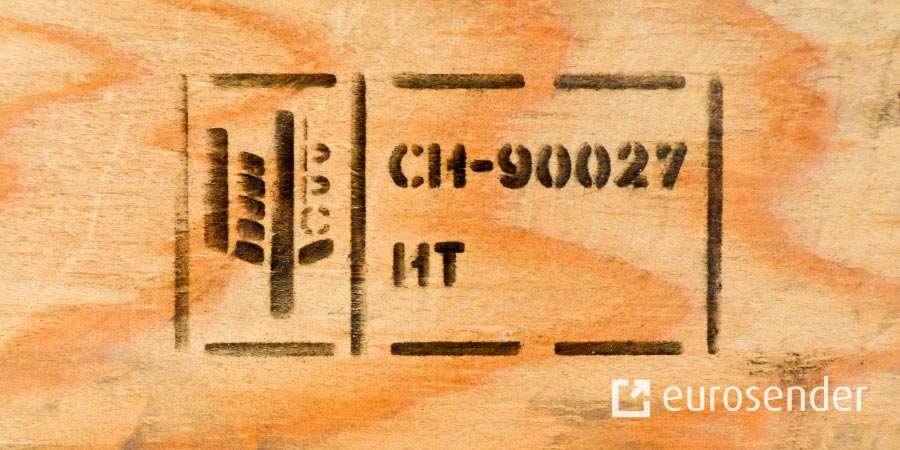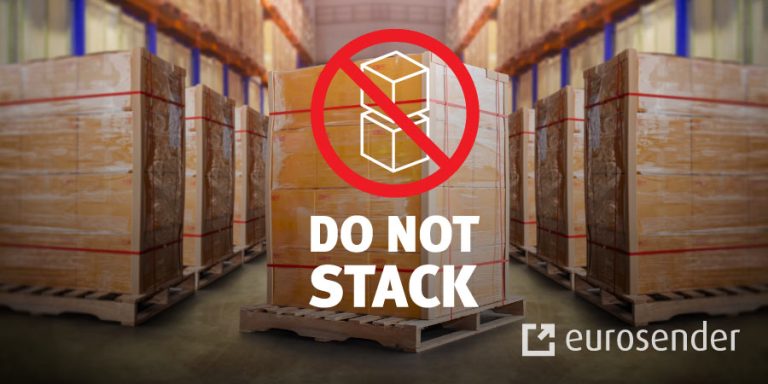What do the Markings on Pallets Mean?
TL;DR
- IPPC Marking indicates the pallet meets ISPM 15 criteria for pest treatment, safe for international shipping, featuring a leaf symbol, country code, and treatment code.
- Two-Digit Treatment Codes define the treatment method: HT (heat-treated), DB (debarked), MB (Methyl Bromide, banned), EUR/EPAL (European standards), and KD (kiln-dried).
- Coloured Pallets signify ownership: red for PECO or LPR, blue for CHEP, and brown for IPP; using them may lead to legal issues.
- No Markings indicate a national pallet, typically unregulated and used for domestic transport only.
Before using pallets, you should visually inspect them and check for markings. They also reveal information about the quality of the pallet. Pallet treatment codes, markings and colours have different meanings in international shipping. Read more to learn what pallet markings such as IPPC and HT mean.
Create an account for free!
What does IPPC mean on a pallet?
An IPPC stamp or marking means that the pallet has met the ISPM 15 criteria of the IPPC (International Plant Protection Convention), i.e. the pallet has been treated against invasive insects or plant diseases and is safe for international shipping.
IPPC markings on pallets typically include:
- The leaf-shaped IPPC symbol, which is located on the left side of the stamp
- A 2-letter country code and a company registration number are located on the right side of the stamp
- The two-digit pallet treatment code, which is also located on the right side of the stamp
You can see an example of how this looks like in the image at the top of this article.
You may also be interested in:
Two-digit pallet treatment codes
The two-digit pallet treatment code is an abbreviation of the treatment method used. Below are some common examples of these pallet markings and what they mean:
- HT (heat treated pallets): This is a treatment code that means the pallet has been heated to remove pests. The minimum core temperature for heat treatment is 56°C for softwoods and 60°C for hardwoods for at least 30 minutes in a kiln. Such pallets are not harmful.
- DB (debarked): The tree bark has been removed according to IPPC regulations. If the pallet only has this stamp, it means no treatment has been applied.
- MB (Methyl Bromide): These chemically treated pallets have been fumigated with toxic Methyl Bromide. This type of treatment is banned in many countries due to the negative health and environmental effects associated with this powerful pesticide. DO NOT USE!
- EUR/EPAL Pallets (European Pallet Association): Both stamps have the same meaning, but EUR is an older stamp from when pallets were handled by railway companies. If you can choose, always look for pallets stamped by EPAL. They are heat treated but have not been treated with chemicals.
- KD (kiln-dried): Kiln-drying is a method to remove moisture from the wood (19% or less) to control warping, fungal growth, and other damage. The kilns used do not necessarily reach 56°C that would qualify as HT, and as such, require a separate stamp. However, many companies drying the wood also heat it, so the pallet gets a KD-HT marking.
You may also be interested in:
What if there are no markings on the pallet?
If there are no markings or stamps on the pallet, this is a “national pallet” intended exclusively for domestic transport. Such pallets are usually not chemically treated.
Coloured pallets: why are pallets painted blue, red, or brown?
Coloured pallets are usually rented and legally still belong to the company that has their initials branded on the side. For example, pallets that are painted red are usually owned by PECO or LPR, while pallets that are painted blue are usually owned by CHEP.
We recommend not using coloured pallets, even if you find one that seems discarded, as doing so may cause legal complications. You can check the summary below of pallet colours and who owns them:
- Red pallets: They can be from PECO (The Pallet Exchange Company from the USA) or LPR (La Palette Rouge from Europe)
- Blue pallets: CHEP (Commonwealth Handling Equipment Pool from Australia)
- Brown pallets: IPP (IPP Logipal from Europe)
Other pallet markings and what they mean
You may come across pallets with other markings and wonder what they mean. Less-common stamps usually indicate the name of the pallet inspection firm, a manufacturing company, or a rare type of wood. If you cannot determine the meaning of a certain pallet marking, avoid using this pallet. You can find some examples below:
- CP (chemical pallet): These pallets are stamped with CP followed by a number between 1 and 9, as there are nine different versions. CP pallets were introduced to unify the types of pallets that are used for the chemical and plastic industry in Europe.
- VMF pallets: This is a type of pallet that was created in France for the glass industry, especially for shipping glass bottles. VMF pallets can be heat treated according to IPPC requirements and also kiln dried. Additionally, these pallets can be repaired and used repeatedly.
- PRL pallets (Package Research Laboratory): This marking means that the pallet is verified by the Package Research Laboratory, the largest ISPM 15 / IPPC inspecting agency in the USA. The PRL provides the certification stamp needed for shipping pallets from the USA overseas.
Understanding what different pallet treatment codes, markings and colours mean can help you make the right decisions for your logistics operations. If you need any help or advice about pallet delivery services, please do not hesitate to get in touch with us!
Interested in learning more about pallet and freight shipping? Check all our articles about pallet deliveries.
Create an account for free!
About the author






